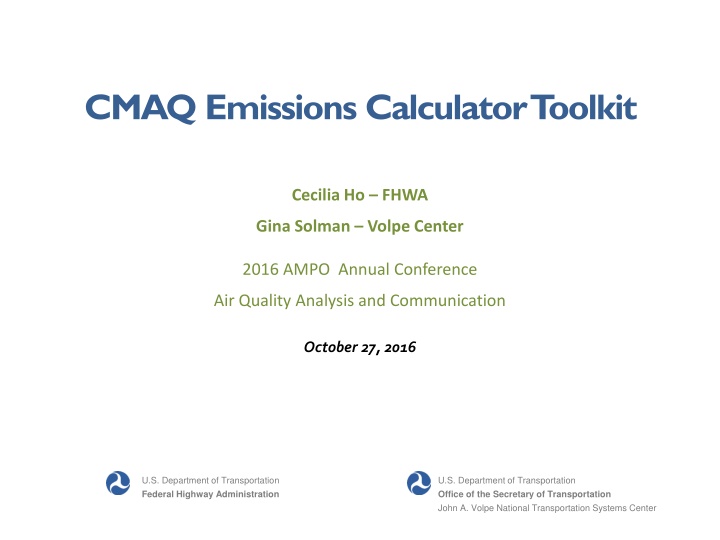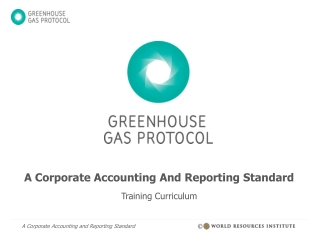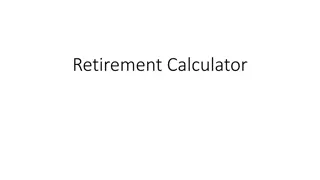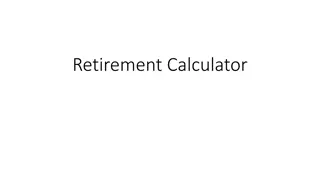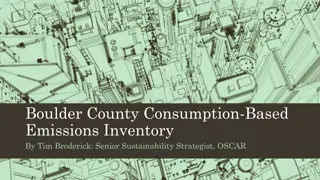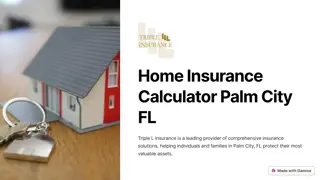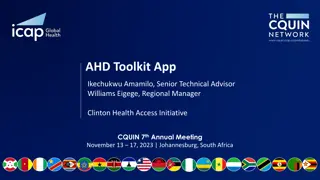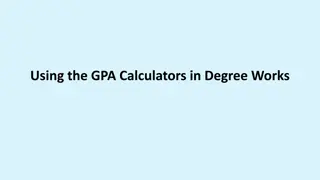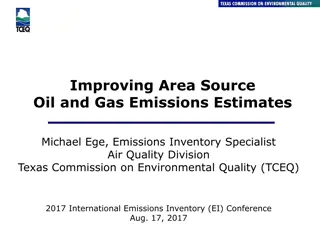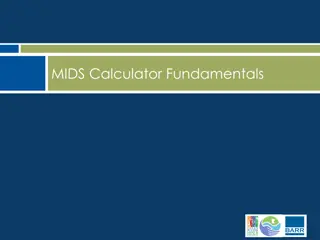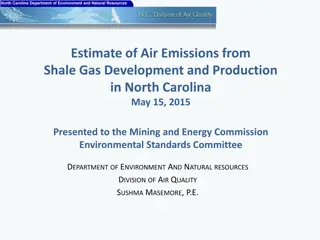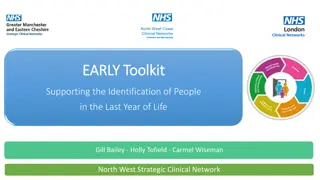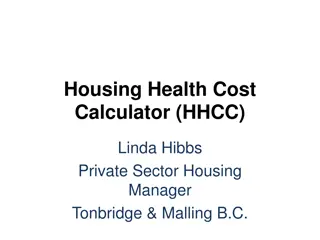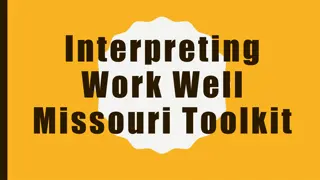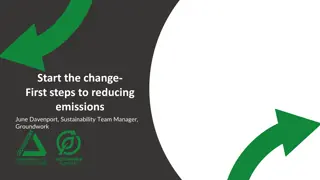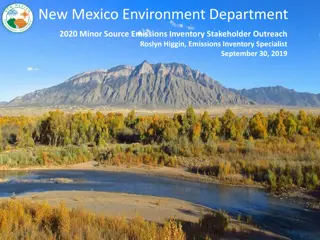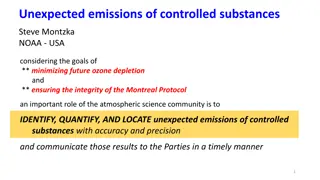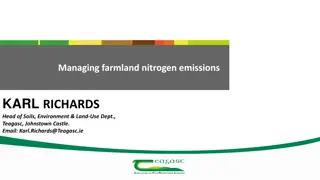CMAQ Emissions Calculator Toolkit Overview
This content discusses the CMAQ program, its purpose, eligibility criteria, project types, and expanded eligibility under the FAST Act. The toolkit provides valuable information for transportation projects aiming to reduce emissions and improve air quality.
Download Presentation

Please find below an Image/Link to download the presentation.
The content on the website is provided AS IS for your information and personal use only. It may not be sold, licensed, or shared on other websites without obtaining consent from the author.If you encounter any issues during the download, it is possible that the publisher has removed the file from their server.
You are allowed to download the files provided on this website for personal or commercial use, subject to the condition that they are used lawfully. All files are the property of their respective owners.
The content on the website is provided AS IS for your information and personal use only. It may not be sold, licensed, or shared on other websites without obtaining consent from the author.
E N D
Presentation Transcript
CMAQ Emissions Calculator T oolkit Cecilia Ho FHWA Gina Solman Volpe Center 2016 AMPO Annual Conference Air Quality Analysis and Communication October 27, 2016 U.S. Department of Transportation Federal Highway Administration U.S. Department of Transportation Office of the Secretary of Transportation John A. Volpe National Transportation Systems Center
Outline CMAQ program overview Purpose Approach to tool development Schedule for tool releases Demonstration of tools by project type 2
CMAQ: A Quick Overview Congestion Mitigation and Air Quality Improvement (CMAQ) Program Established in 1991 under ISTEA (23 U.S.C. Section 149) The CMAQ program is established for transportation projects that contribute to the attainment or maintenance of the national ambient air quality standards for ozone, carbon monoxide, or particulate matter Reauthorized in all subsequent transportation reauthorization Acts, most recently the FAST Act Annual funding level at about $2.3 -$2.5 billion (FY 2016-2020) 3
Basic CMAQ Project Eligibility Each CMAQ project must be a transportation project generate emission reductions be located in or benefit a nonattainment or maintenance area Emission Reduction Must reduce emissions from transportation sources o CO o Ozone precursors (VOC and NOx) o PM2.5 and PM10 (both direct and applicable precursors) Reductions must contribute to the area's overall clean air strategy and should be demonstrated by the emissions analysis required by FHWA. 4
Eligible Projects Wide range of eligible projects Diesel engine retrofits & other advanced truck technologies Idle reduction Congestion reduction & traffic flow improvements Freight/Intermodal Transportation Control Measures (TCM) Transit improvements Bicycle and pedestrian facilities and programs Travel demand management Carpooling and Vanpooling Carsharing Alternative fuels & vehicles Inspection & maintenance programs Public education & outreach activities Innovative projects 5
Expanded Project Eligibility under FAST Act Diesel emission control technology for non-road diesel vehicles and engines used in construction projects or port- related freight operations located in ozone and PM areas, and Funded under Titles 23 or 49 Port related landside non-road or on road equipment In PM2.5 areas Installation of vehicle to infrastructure communications equipment 6
CMAQ Emissions Calculator: Purpose Develop tools to assist the estimation of emission benefits of CMAQ projects, and to support reporting activities: Annual CMAQ report Proposed CMAQ on-road mobile source performance measure Respond to request from project sponsors who may have limited technical and analytical capabilities to estimate emission benefits Provide analysis methodologies for most encountered CMAQ projects Provide a common set of methodologies using consistent assumptions, available data sources Serve as a resource only; areas are not required to replace methodologies already in practice 7
Approach to Tool Development Identified 80 project types Grouped Project Types Available methodology (fully-, partially-, un-developed) Projects based on changes in: emission rates, speed, idling, VMT, etc. Priority project types Prioritized 20 Project Types in 5 CMAQ categories 9
Project Tools in 2016 CMAQ Project Category Eligible Project Types Intersection Improvements Traffic Signal Synchronization Roundabouts Vehicle Replacement Engine Replacement Heavy Duty Vehicle Retirement Program Engine Rebuilding Exhaust Retrofit After Treatment Hardware/Devices On-Board Emissions Control Devices Status Congestion Reduction and Traffic Flow Improvements Now available! Advanced Diesel Truck / Engine Technologies Coming Soon! http://www.fhwa.dot.gov/environment/air_quality/cmaq/toolkit/ 10
Project Tools Planned in 2017 CMAQ Project Category Eligible Project Types Fueling Facilities Vehicle Purchase Fleet Conversion Engine Replacement Hybrid Vehicles New Transit Vehicles Diesel Engine Retrofits Bus Replacement Alternative Fuel Bus Replacement Carpooling Vanpooling Alternative Fuels Transit Improvements Travel Demand Management 11
Coordination MPO beta testers provide excellent feedback thank you! Gathered feedback and data from EPA on diesel retrofits and replacements modules Coordinating with DOE Clean Cities and Argonne National Laboratory on alternative fuels tool 13
Summary Easy to use Excel-based Readily available inputs Consistent methods Customizable with local data www.fhwa.dot.gov/environment/air_quality/cmaq/toolkit/ 14
Thank you Cecilia Ho Team Leader, Air Quality and Noise Federal Highway Administration Office of Natural Environment Cecilia.Ho@dot.gov Gina Solman Volpe Center Office of the Assistant Secretary for Research and Technology (OST-R) Gina.Solman@dot.gov 16
